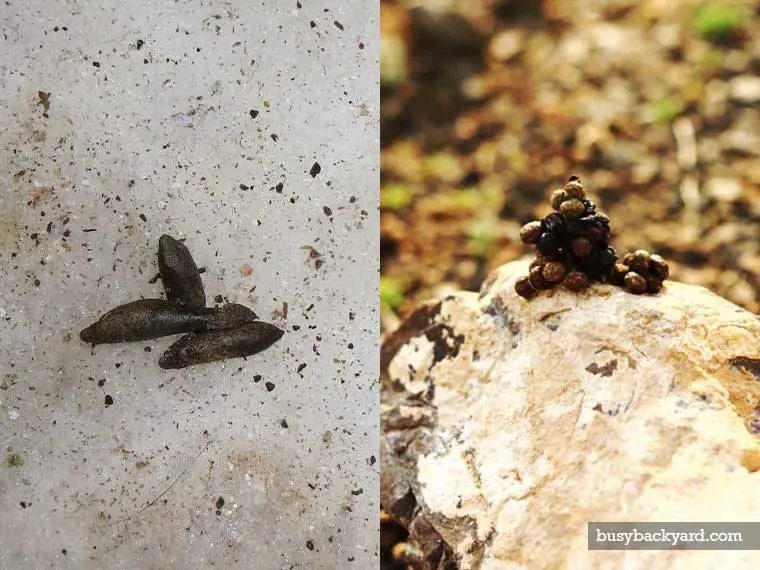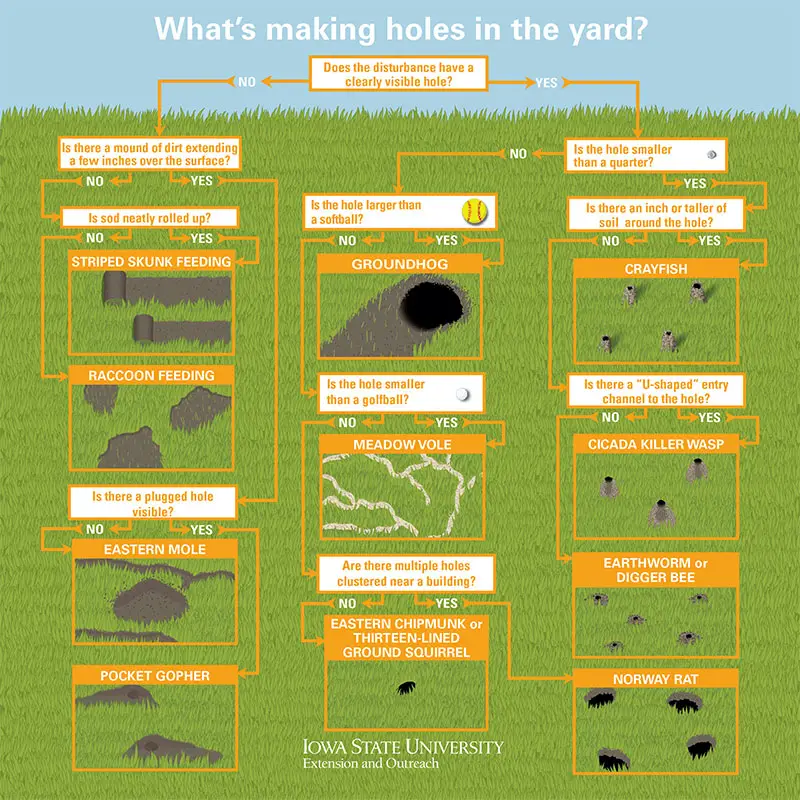Seeing that a critter has dug lots of holes in your backyard or garden lawn is enough to enrage most people. You don’t just have the anger over the amount of time you’ve spent creating the perfect outdoor environment, but also worries of disease carrying vermin.
It’s perfectly normal to feel anxious if you believe the holes in your yard have been made by rats or chipmunks, because both can cause damage and spread disease. It’s not just the risks to your lawn and health, but also possible damage to foundations and walkways.
But before I go on, let me say one thing. When it comes to the whole chipmunk holes vs rat holes debate, I don’t think there’s one I’d prefer over the other. Both are intrusive, feed on vegetation in your backyard, dig extensive tunnel systems, and can attract snakes to your backyard which amplifies your critter problem.
If you do want to know the difference between chipmunk holes vs rat holes in your yard, read on. It’s not easy, but there are some tell-tale signs to look out for.
Rat holes vs chipmunk holes: what’s the difference?
I encourage you to read this, because it explains why chipmunks and rats are such a problem in your backyard. Not just to plants and vegetation, but also hard standing areas such as patios and foundations.
But it’s very hard to know the difference between their holes. Here’s a breakdown that explains what each looks like, and the small differences.
What chipmunk holes look like
- No mounds of dirt at the entrance to the hole (same as rat holes).
- Chipmunk holes have several entrances (same as rat holes). If you see lots of holes within a 10-meter area, it possible they have been dug by chipmunks. They love to create supplementary holes which give different access point into the tunnels they create in your backyard.
- Tunnel entrances are 2 to 3 inches in diameter.
- Can sometimes plug the entrances to their holes.
- Like to burrow near and underneath manmade cover or alongside tree roots.
What rat holes look like
- No mounds of dirt at the entrance to the hole (same as chipmunk holes).
- Rat holes have several entrances (same as chipmunk holes).
- Tunnel entrances are 2 to 4 inches in diameter (can be a little bit larger than chipmunk holes).
- Do not plug the entrances to their holes.
- Like to burrow along fence line and in dense vegetation such as under bushes, near a food and water source, and preferably in sandy soil.
As you can see, comparing rat holes to chipmunk holes is not easy… but there is another way you can tell which rodent is damaging your yard.
It’s their poop.
Yes, you heard right. Chipmunk poop is different to rat poop so this is one way you can figure out who the holes belong to.
Rat poop is black and will often be found in large groupings that are similar in size to olives. Each poop will be elongated with a sharp end. Rats are prodigious poopers too. They can poop up to 40 droppings a night.
Compare that to chipmunk poop, which is almost similar to the untrained eye, but there’s enough of a difference once you know what to look for.
Chipmunk poop is poop is brown to black so can be lighter colored than rat droppings. It will also be in the form of oblong pellets tapered at the ends, which are no more than 1 centimeter in size. So, a lot smaller than rat poop.

(Credits rat / chipmunk)
But the biggest way to solve the rat holes vs chipmunk holes question is the presence of poop in the first place.
Rats will poop and don’t care about it. Compare this to chipmunks who will hide their poop as otherwise it will attract predators. They will often only poop in their burrows.
So, if you see lots of poop as described, it’s probably a rat hole.
Another way to tell the difference between chipmunk and rat holes is actually seeing the critters in your backyard. Chipmunks tend to be active in the early mornings and late afternoons, whilst rats are most active at night-time.
Handy Hint: Rats can squeeze into very small spaces and gaps so always seal up any holes leading into your home.
Would I rather have rat or chipmunk holes in my yard?
In my opinion, I’d rather chipmunk holes because I can see them in daylight hours making them easier to trap and catch.
Also, it’s the whole potential for disease that rats carry.
- Leptospirosis (aka Weil’s disease)
- Toxoplasmosis
- Rat Bite Fever
- Tularemia or Rabbit Fever
- Roundworm
- The Plague
As mentioned, both can dig tunnels that prevent a potential risk to your home as they like to go near walls and foundations.
Both can also dig to leave uprooted bulbs in plant pots and garden beds and leave seed and grain piles hidden away. You might also see holes and bitemarks taken out of low-hanging vegetables and fruit.
How to get rid of rats and chipmunks in your yard
If it is indeed chipmunks or rats in the holes, here are 5 humane ways you can get rid of rodents in your backyard.
- Remove any food sources: this can include using pest-proof bird feeders and keeping your clean of pet food or fruit that falls onto the lawn. I’d also recommend removing any pet food bowls or leaving scraps out for birds.
- Try an ultrasonic repellent: these devices make sounds that we can’t hear, but rats and chipmunks can, and it could scare them off, here’s one on Amazon (or click the pic below).
- Use mesh or cages over your bulbs: if the chipmunks can’t reach your planted bulbs, it may discourage them from making holes and homes in your backyard.
- Keep your backyard tidy: this means mowing the lawn regularly and removing wood piles or gardening debris that might have given them some initial places to feel safe.
- Hose the holes out: Using a garden hose, flush water into the hole. This can make rats and chipmunks leave the tunnels, not to return. You can then fill the holes or block them with mesh or chicken wire.
Could the holes belong to a different critter?
Unless you have seen a rat or chipmunk, don’t dismiss the idea it could be a different animal making holes in your yard. I’ve previously written other guides that might help.
There’s also this diagram from Iowa State University which is very handy for identifying holes in your yard.

Conclusion
In conclusion, whilst it’s not really choosing one over the other, because both can be bad, if I had to choose, I’d rather the holes belonged to chipmunks vs rats.
I hate the idea of all the disease they can carry.
More backyard guides…
- The difference between mole and snake holes
- How to get rid of snake holes in your lawn
- The difference between mole and rat holes
Image used in header via https://commons.wikimedia.org/wiki/File:Rat_in_the_Hole.jpg



